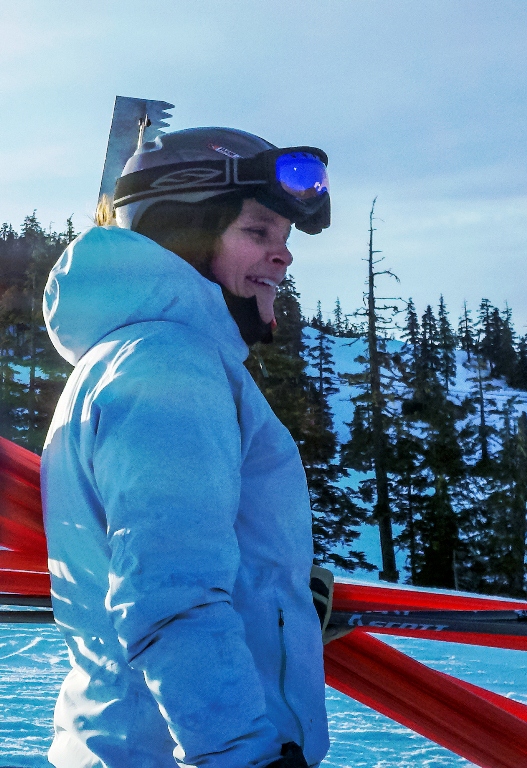Swiss skier Dominique Gisin, of Switzerland, and Tina Maze, of Slovenia, skied the women’s downhill course in 1 minute, 41.57 seconds at the Sochi Olympics.
“Absolutely incredible,” the NBC announcer shouted as the race clock showed the exact same time for the two women.
To the average TV viewer, the Olympics are often about the incredible. But to an athlete who spends years and years preparing for that Olympic moment, it’s all about the possible.
Juneau’s Hilary Lindh was 18 when she qualified for the 1988 Olympics in Calgary, Alberta, Canada. She had been on the U.S. Ski Team full time for two years, racing World Cup events in North America and Europe. She’d already won a U.S. downhill title and the World Junior downhill title.
“Nothing is quite like the Olympics.”

It’s a place where great expectations can turn into big disappointments. For Lindh, Calgary was a place to learn.
“You know people would say, ‘go for the gold,’ ” Lindh recalls. “I was taking them seriously, when I really had no business thinking that was possible.”
At that point, the best she’d placed in a World Cup event was ninth. The Calgary Olympics were a lot of pressure for a teenager, and not a lot of fun.
“I just felt like everyone was expecting me to have some miracle thing happen, so I was thinking that might happen. And it’s just not very realistic, so I learned a lot,” she says, laughing.
Lindh says she learned she could enjoy the Olympics, meet other athletes, and still concentrate on her event.
“The other aspect of it was to focus on the actual skiing instead of the potential outcome, and that’s something that served me for the rest of my career,” she says.
Four years later, she was ready for the 1992 Olympics in Albertville, France. Hilary Lindh won the silver medal in the women’s downhill, because she says, she was focused on her skiing and not on the result. She calls it being “right there in the moment.”
“If there was any distraction with thoughts about what possible results would be, it wouldn’t have happened. You know, the minute you start thinking about an outcome, you aren’t doing your best anymore.”
During that race, Lindh says, winning a medal wasn’t even a thought in her mind. And when she discovered she’d come in second, she had a private moment behind her face mask.
“That split second where nobody could see your face necessarily, and it was just me realizing what I’d done, that was the coolest thing. Before it was an external celebration, it was an internal one.”
In her 11 years of professional racing, including three Olympics, Lindh trained in all events, but concentrated on downhill. In a sport where races are won by hundredths of a second, she won the silver medal, three World Cup downhill championships, and had 27 top-ten finishes.
She says she had a training plan for every year, aimed at reaching her best performance when it counted the most.
After she retired from professional ski racing in 1997, Lindh completed her bachelor’s and master’s degrees, helped coach future Olympians, and three years ago moved back to Juneau. She works for the Alaska Department of Transportation, and she and her husband Jodie McCutcheon have an 8-year old daughter.
You can see mom, daughter and a number of other youngsters skiing on weekends at Eaglecrest Ski Area.
She’s a member of the National Ski Hall of Fame and was inducted in the Alaska Sports Hall of Fame in 2009.
